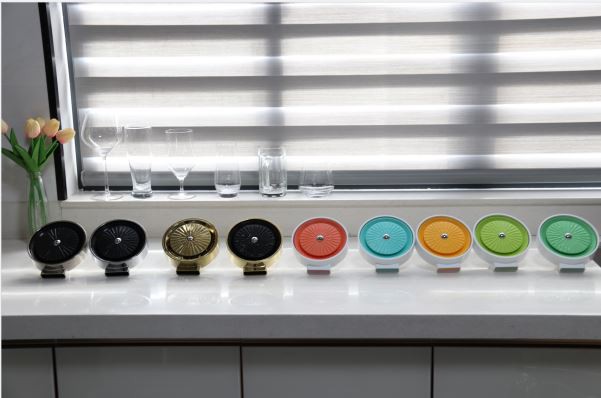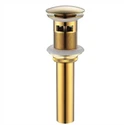A cup washer, also known as a glass rinser, is a specialized kitchen fixture designed to efficiently clean and rinse cups, glasses, and other small kitchenware items. As a leading cup washer supplier, I've witnessed firsthand the transformative impact these devices can have on kitchen operations, both in residential and commercial settings. In this blog post, I'll delve into the various functions of a cup washer and why it's a valuable addition to any kitchen.
1. Efficient Cleaning
One of the primary functions of a cup washer is to provide a quick and efficient cleaning solution for cups and glasses. Traditional methods of hand - washing can be time - consuming, especially when dealing with a large number of items. A cup washer uses a high - pressure water spray system to dislodge and remove dirt, debris, and leftover liquids from the interior and exterior of the cups.
The design of the cup washer nozzle is engineered to direct water at multiple angles, ensuring that every part of the cup is thoroughly cleaned. This high - pressure spray can reach areas that might be difficult to clean by hand, such as the bottom corners and the rims of the cups. For example, in a busy restaurant, a cup washer can clean a stack of cups in a matter of seconds, allowing staff to focus on other important tasks.
2. Water Conservation
In today's world, water conservation is a critical concern. Cup washers are designed with water efficiency in mind. Unlike running a tap continuously while hand - washing cups, a cup washer uses a pre - determined amount of water for each cleaning cycle.
Most cup washers are equipped with sensors and flow control mechanisms that regulate the water flow, ensuring that only the necessary amount of water is used. This not only helps in reducing water wastage but also lowers utility bills. For instance, in a commercial kitchen that washes hundreds of cups daily, the water savings over time can be substantial.


3. Hygiene and Sanitation
Maintaining proper hygiene in the kitchen is of utmost importance, especially when it comes to items that come into contact with food and beverages. A cup washer plays a crucial role in ensuring that cups and glasses are hygienically clean.
The high - pressure water spray not only removes visible dirt but also helps in eliminating bacteria and germs. Additionally, some cup washers come with features such as built - in disinfectant dispensers or hot water options. Hot water can effectively kill a wide range of harmful microorganisms, providing an extra layer of sanitation. In a food service establishment, using a cup washer can significantly reduce the risk of food - borne illnesses.
4. Space - Saving
In modern kitchens, space is often at a premium. Cup washers are compact and can be easily installed under the sink or on the countertop. They take up minimal space compared to traditional dishwashing setups.
For example, in a small residential kitchen, a Sink Cup Rinser can be a great addition as it allows for quick cup cleaning without the need to fill up the sink or use a large dishwasher. This makes the kitchen more organized and functional, leaving more space for other essential kitchen appliances and activities.
5. Versatility
Cup washers are not limited to just cleaning cups. They can also be used to rinse other small kitchenware items such as mugs, tumblers, shot glasses, and even small bowls. This versatility makes them a valuable tool in any kitchen.
Whether you're a coffee shop owner looking to clean espresso cups or a homeowner wanting to rinse your children's sippy cups, a cup washer can handle the task with ease. Some cup washers also come with adjustable nozzles or settings that allow you to customize the cleaning process based on the size and shape of the item being cleaned.
6. Aesthetic Appeal
Apart from their functional benefits, cup washers can also enhance the aesthetic appeal of a kitchen. Many cup washers are available in a variety of styles and finishes to match different kitchen decors.
For example, the Glass Rinser In Matte Black offers a sleek and modern look that can complement contemporary kitchen designs. In a high - end restaurant or a stylish home kitchen, a well - designed cup washer can be a focal point, adding a touch of sophistication.
7. Time - Saving
In both residential and commercial kitchens, time is precious. A cup washer can save a significant amount of time in the cleaning process. Instead of spending minutes scrubbing each cup by hand, you can simply place the cup in the washer and let it do the work.
In a commercial setting, this time - saving feature can translate into increased productivity. Staff can serve more customers in less time, leading to higher customer satisfaction and potentially increased revenue. In a home kitchen, it allows homeowners to spend more time with their families and less time on mundane cleaning tasks.
8. Compatibility with Kitchen Systems
Most cup washers are designed to be easily integrated into existing kitchen plumbing systems. They can be connected to the water supply and drainage system without major modifications.
This compatibility makes it convenient for both new kitchen installations and kitchen renovations. For example, if you're upgrading your Kitchen Glass Rinser, you can easily replace the old unit with a new one without having to re - pipe the entire kitchen.
As a cup washer supplier, I understand the diverse needs of our customers. Whether you're a small business owner looking to streamline your kitchen operations or a homeowner wanting to make your kitchen more efficient, we have a wide range of cup washers to meet your requirements. If you're interested in learning more about our products or would like to discuss a potential purchase, please feel free to reach out to us for a detailed consultation. We're here to help you find the perfect cup washer solution for your kitchen.
References
- "Kitchen Fixtures and Appliances: A Comprehensive Guide", published by Kitchenware Press.
- "Water - Saving Technologies in the Kitchen", Journal of Sustainable Kitchen Design.
- "Hygiene Standards in Food Service Establishments", Food Safety Magazine.





